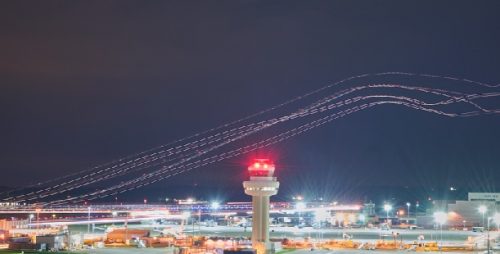Air traffic control company deploys ‘once in a generation’ airspace upgrade

One of the UK’s biggest airspace modernisation changes has been implemented over Wales and the South West following more than four years of development by Fareham-based air traffic manager NATS.
In a first for the UK, Systemisation and Free Route Airspace (FRA) was deployed simultaneously last Thursday to transform a third of the UK’s airspace infrastructure, to reorganise the country’s airspace to reduce congestion and improve capacity.
One of the most technical and complex projects ever undertaken by NATS, the West Airspace Deployment (West) forms a key part of the industry’s roadmap to deliver a more sustainable future for air travel and supports the UK government’s Airspace Modernisation Strategy.
The change was welcomed by the Aviation Minister, Baroness Vere of Norbiton, who said: “Revolutionising how we use our airspace is vital to decarbonising aviation. NATS’ West Airspace Deployment is helping us to save emissions and take us a step further towards Jet Zero. For this reason it is vital we continue our ambitious airspace modernisation plans across the UK.”
Spanning 54,000 square nautical miles and including some of the busiest routes for international flights to and from major UK airports, West delivers benefits for all users of the airspace.
It includes the latest of nine airspace change projects NATS has implemented in the last two years to modernise and improve the efficiency of the UK’s network. Combined, these are already enabling savings of nearly 60,000 tonnes of CO2 a year – the equivalent to the annual emissions of more than 17,000 family homes.
By using the latest aircraft technology and approach to airspace design thinking, a systemised network has highly defined flight paths which use the available airspace as efficiently as possible.
To design systemised routes, Performance Based Navigation (PBN) uses satellite technology on modern aircraft, allowing them to fly on precise flight paths from take off until they reach the higher-level network. This means airlines and airports will experience greater predictability for their operations while the potential for delay will be reduced.
West simultaneously deployed the second tranche of FRA in the UK following the first deployment over Scotland in 2021. Covering the high-level network above 24,500ft, FRA removes the airspace structures to allow aircraft to fly their preferred route between a defined entry and exit point. Airlines have the freedom to plan and fly their optimal route to help reduce fuel burn, flight time and CO2 emissions.
Juliet Kennedy, operations director at NATS, said: “We are delighted to have safely implemented West and deliver a simpler, more sustainable future for all airspace users. This section of airspace supports over 1000 flights a day, so these changes will help the wider aviation industry deliver on their environmental commitments.
“After more than four years of planning, we are incredibly proud to have accomplished this milestone and look forward to continuing the modernisation of the UK’s airspace.”









